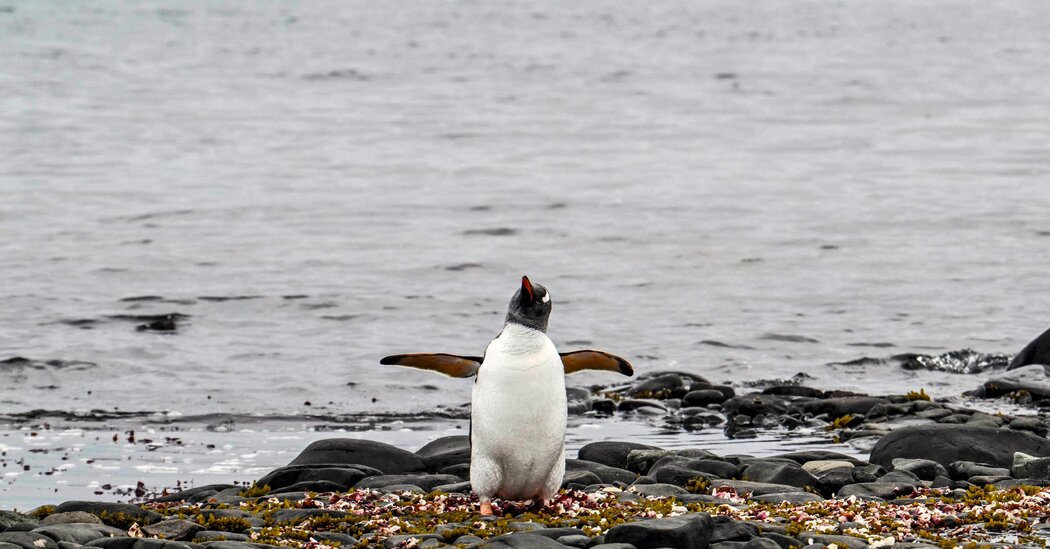Why It Matters: Penguins are already under pressure.
The familiar black-and-white birds are facing numerous threats, including climate change, pollution and commercial fishing. Three Antarctic penguin species — emperor penguins, southern rockhopper penguins and macaroni penguins — are listed as vulnerable or near threatened.
Before H5N1 arrived in the Antarctic region last fall, highly pathogenic bird flu viruses had never been documented in the area before. That means that the penguins are likely to have little existing immunity. And because they breed in large, crowded colonies, once one penguin is infected, the virus could spread rapidly, causing mass mortalities. (As the virus spread through South America last year, Chile reported the deaths of thousands of Humboldt penguins.)
The extent of the virus’s spread in Antarctic penguin populations remains unclear, and the king penguin cases have not yet been confirmed.
“We have no conclusive evidence that king penguin populations in South Georgia have been impacted by the virus,” Laura Willis, the chief executive of the government of South Georgia and the South Sandwich Islands, said in an email. “We are monitoring the situation across the islands and apply a precautionary approach, which includes closing some sites to allow further investigations to take place.”
Background: Scientists have been worried about the spread of the virus in Antarctica.
The virus, which first emerged in 2020, has taken an unprecedented toll on wild birds and mammals. After the virus was detected at the tip of South America last year, OFFLU, a global network of flu experts, warned that the pathogen could spread to Antarctica next.
The Antarctic region provides critical breeding territory for more than 100 million birds as well as seals, sea lions and other marine mammals. If the virus arrived in the region, its impact on those animals “could be immense,” OFFLU said in a statement last August.
Just two months later, the virus was detected in brown skuas in South Georgia, the first cases in the region. Since then, infections have been confirmed in numerous other bird species, as well as in elephant and fur seals. These marine mammals also breed in large colonies, and they suffered major losses as the virus spread through South America, where tens of thousands of seals and sea lions were reported dead. Scientists worry that the same fate may befall Antarctica’s seals as the virus spreads.
Infections have not yet been reported on the Antarctic mainland, although experts have said that the virus may already be spreading there undetected.







